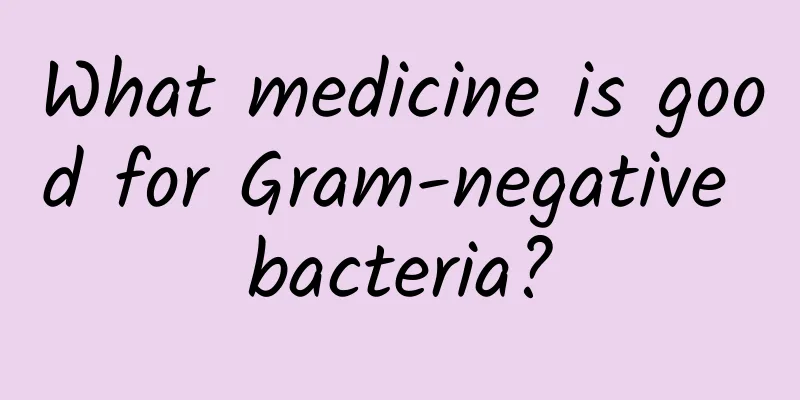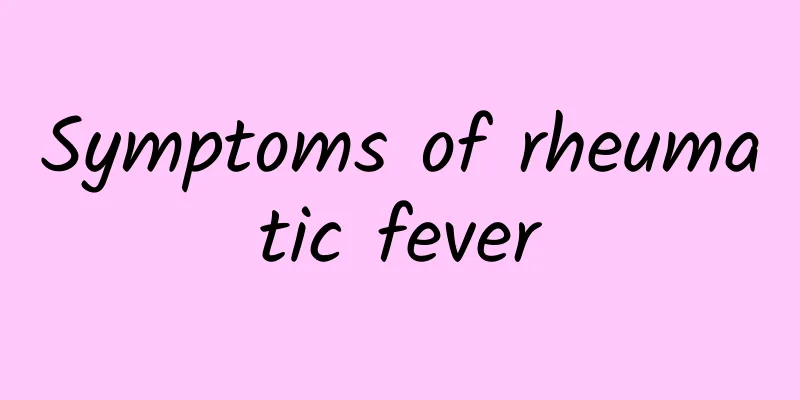What medicine is good for Gram-negative bacteria?

|
Bacteria and viruses are important factors that affect people's health, because bacteria can invade the human body and bring devastating disasters to human cells. There are many types of bacteria and viruses, including the very harmful Gram-negative bacteria. It is one of the viruses that causes great trauma to the human body and must be treated in time. Let's take a look at what medicine is good for Gram-negative bacteria? Antibiotics mainly against Gram-negative bacteria The main antibiotics against Gram-negative bacteria include aminoglycosides, rifamycins and polymyxins. (a) Aminoglycosides: such as streptomycin, kanamycin, amikacin, neomycin, gentamicin, spectinomycin, apramycin, etc. It is a glycoside produced by actinomycetes and is composed of amino sugar and aglycone. They have the following common characteristics: First, it has a stronger effect on Gram-negative bacteria, has a certain inhibitory effect on Mycobacterium tuberculosis, and is ineffective against anaerobic bacteria. Secondly, it is difficult to absorb when taken orally and is only used for intestinal infections. Injection has a good effect and most of it is excreted in the urine in its original form. It is used for systemic infections and urinary tract infections. Third, it is toxic to the vestibular nerve, auditory nerve, and kidneys to varying degrees. Fourth, this type of drug is prone to drug resistance. There is a certain degree of cross-resistance between different antibiotics. For example, bacteria resistant to gentamicin and kanamycin are resistant to streptomycin. Fifth, it achieves its antibacterial effect by inhibiting bacterial protein synthesis. It is a dormant bactericidal drug that kills bacteria at high concentrations and inhibits bacteria at low concentrations. Sixth, its sulfate is often used clinically. Seventh, this type of drug has a synergistic effect with β-lactam antibiotics. Adverse reactions: (1) Toxic reactions: Acute toxic reaction: It combines with calcium ions to cause a decrease in the amount of acetylcholine, blocking choleretic nerve fibers, resulting in convulsions, limb weakness, paralysis, respiratory failure, and death. Chronic toxic reactions: Damage to the eighth cranial nerve, resulting in ataxia, deafness, lip and facial paralysis, numbness of the limbs, etc. It can also lead to kidney damage and vitamin deficiency. (2) Allergic reaction: rash, edema, fever, eosinophilia, and piglets may circle, roll, scream, and die of shock. |
<<: What is the best way to treat human infection with Salmonella?
>>: What should I drink when my throat hurts?
Recommend
Penis grows flesh
As the male sexual organ, the penis also has an im...
Method of decoction
Many people choose to see a Chinese medicine doct...
Normal value of venous pressure in hemodialysis
Hemodialysis is the most commonly used method of ...
Can cat's claw cure breast hyperplasia?
Cat's claw has certain effects in eliminating...
How to remove moisture from the body?
It is summer now. Because the weather is hot, peo...
What is herpes simplex? How to treat herpes simplex
Among the various types of herpes, herpes simplex...
Can I have sex during implantation?
The implantation period is actually the time when...
What causes sebaceous nevus? It turns out to be like this
Sebaceous nevus is a congenital developmental abn...
A feeling of blockage below the Adam's apple
If you feel a blockage below the Adam's apple...
Why do my face bones hurt?
The face is the basis of the human body's fiv...
Can I take medicine after eating durian? Can I take medicine after eating durian?
Durian is the king of fruits and is also the favo...
Chinese herbal medicine for liver disease
Liver disease is particularly harmful to patients...
How to prevent the symptoms of hot and humid summer?
The temperature is high in summer, and people are...
What to do during the acute stage of lumbar disease
In the eyes of most people, lumbar spondylosis is...
Blisters on the chest
Chest blisters are a skin problem that many peopl...









